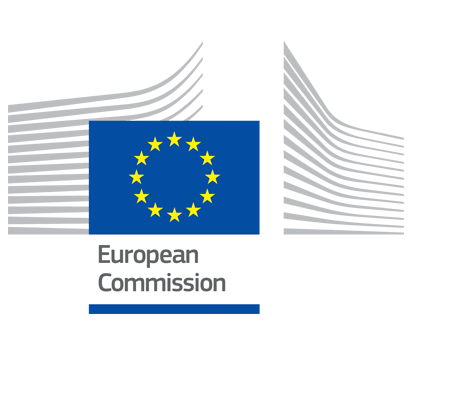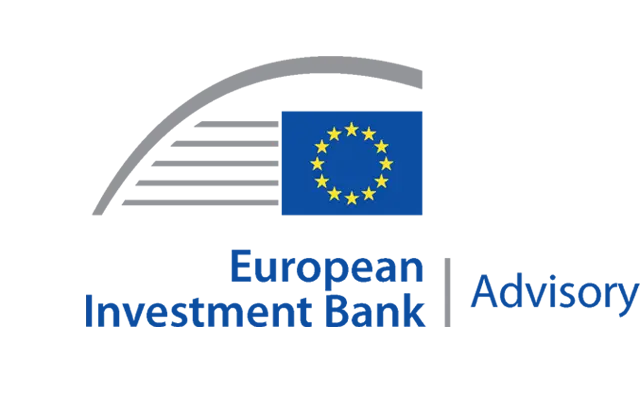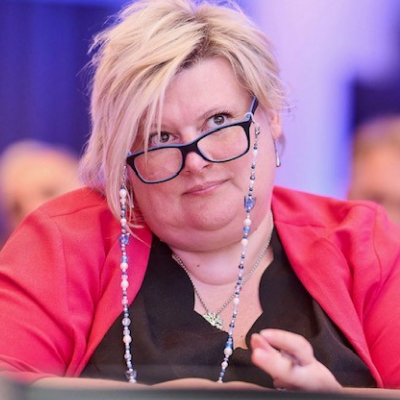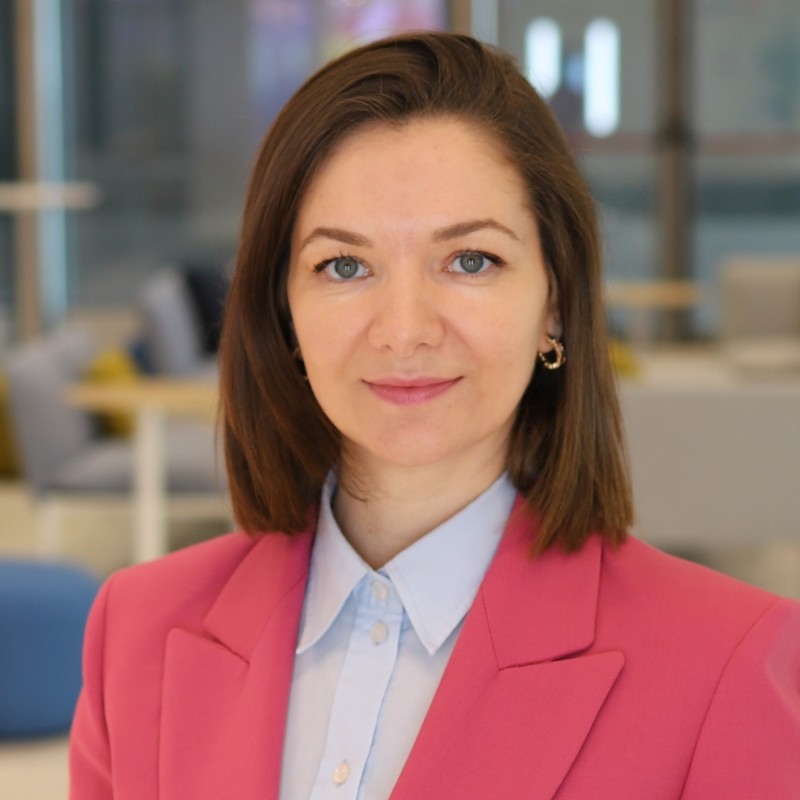ERDF loan, equity and guarantee financial instruments
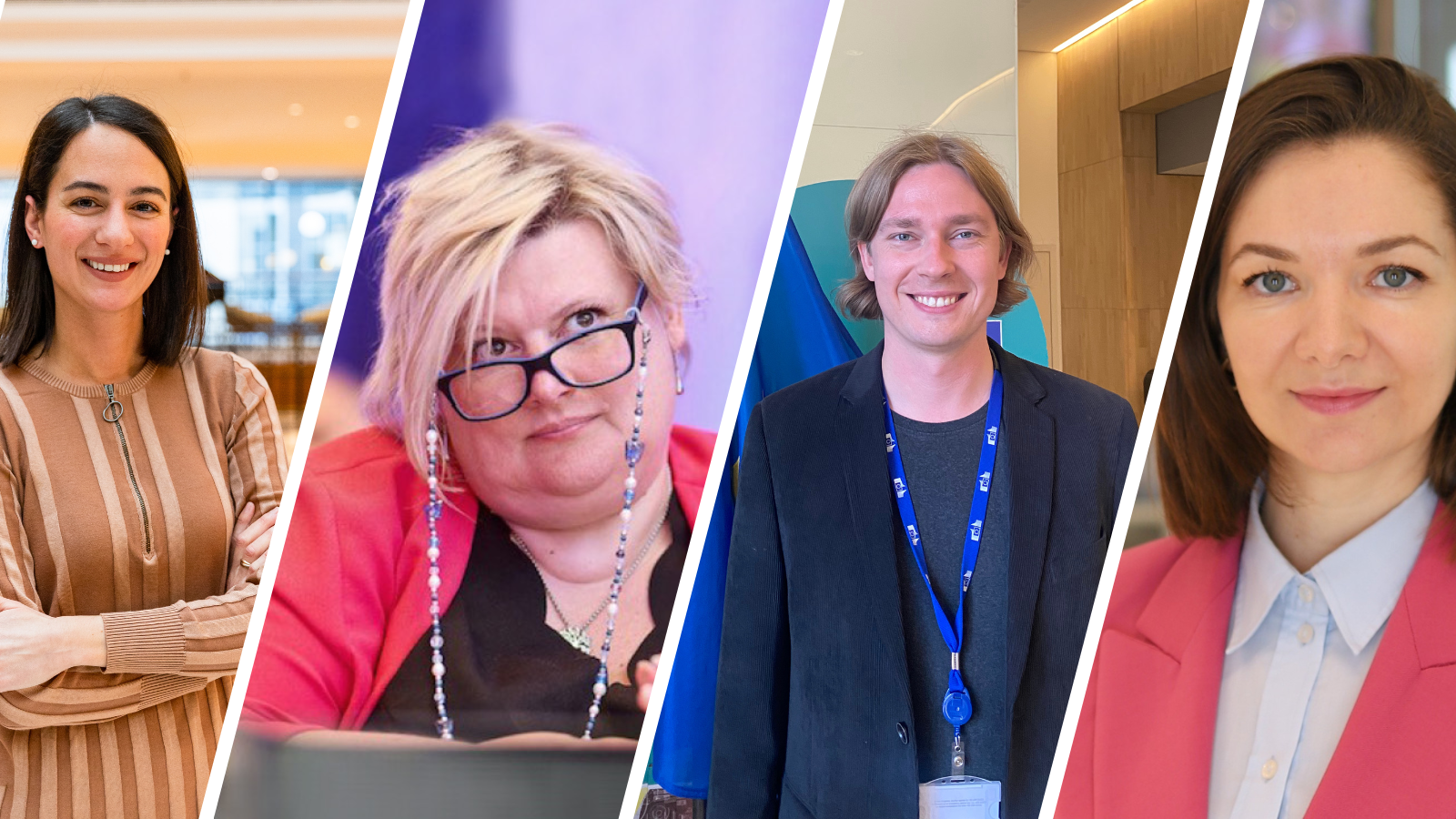
A discussion with Aleksi Aho, Stela Vulpe, and Nathalie Van Neck from DG REGIO, hosted by Caterina Pieretto, European Investment Bank.
Introduction
Caterina Pieretto: Hello and welcome to a new episode of the fi-compass Jam Session podcast. My name is Caterina Pieretto from the European Investment Bank, and I am pleased to have you join us today for our episode on ERDF financial instruments, specifically focusing on loans, guarantees and equity. This is our second podcast tailored for practitioners new to the world of financial instruments. Our first episode on this topic was very successful, and we know from our recent survey that there is an appetite for content aimed at newcomers to the sector. Today we will take an in-depth look into financial instruments, products and how they are used to support different types of operations and investments. It is my pleasure to welcome back from the Financial Instruments Unit of DG REGIO, Nathalie Van Neck, who took part in the last podcast. Hello, Nathalie.
Hello everybody. I guess I'm not such a newcomer anymore, but since the last podcast I've been able to dive deeper into the world of financial instruments. I have enjoyed, amongst others, the close cooperation with the fi-compass team in this area, and in this context I'm also very happy and looking forward to the FI Campus event in November to meet all the practitioners there to exchange good practices and experiences, and of course, to celebrate ten years of fi-compass.
Caterina Pieretto: And we are also joined by two colleagues from the Commission who are genuinely new to financial instruments, Aleksi Aho and Stela Vulpe. Welcome.
I've been with the Commission for almost five months now and nearing the end of a very interesting traineeship. I worked before in a Finnish regional office here in Brussels, and that experience actually inspired me to apply to DG REGIO. I feel like my knowledge now in cohesion policy and financial instruments in the cohesion policy has only deepened.
I joined DG REGIO about five months ago, and I’m working as a secretary for Unit B3, which focuses on financial instruments, a field that is entirely new to me. But I'm learning every day something new, and it's been a rewarding experience.
Caterina Pieretto: So, many of the listeners might know me from the many events I have organised for fi-compass, and I have now recently moved to a wider role within the team, and I am happy to lead our discussion today. And now, without further ado, let's deep dive into today's topic. In this episode, we will discuss each product type, describing the key features of the product and its practical application and benefits for final recipients such as European citizens, startups and SMEs. So, let's start with loans. Aleksi, I guess you knew what a loan was before you joined the financial instruments unit, but perhaps you can share with us the key features of an EU loan instrument. So how would you describe how a risk-sharing loan works in practice?
Aleksi Aho: Okay. Yes, I had the basic understanding of a loan, like, I guess everyone does. But let's break down the basic building blocks of any loan. And whether it's for a house, a car, or a business, every loan is built around five key features, which are principal, interest, maturity, collateral, and the grace period. Now, first, the principal is the original amount of money you borrow, and it's the base amount that you agree to pay back over time. And next we have the interest. This is the cost of borrowing. It's usually shown as an annual percentage rate or APR, and it's how lenders earn money and account for the risk of lending. Then we have maturity, which is simply the length of time you have to repay the loan. This could be months or decades, depending on the type of loan you have, and collateral is an asset you agree to put up as a security for the loan, like a house, for a mortgage, or a car for an auto loan. And if you don't repay, the lender can take this asset to recover the money. For business loans, collateral can be the business premises, property of the business owners, or even a cash deposit at the bank. And finally, the grace period is a short window of time when you are not required to make payments. This is common in student loans or some business loans to give borrowers a little breathing room before repayment starts. Most lenders structure loans using standard off-the-shelf models. The most common one is called amortising loan, where you make equal payments over time that cover both principal and interest. Others, like bullet loans, where the principal is paid at the end. And we have also revolving credit like credit cards. And behind all of this is the concept of risk-sharing. Lenders and borrowers both face risks and the risk mainly is default. Lenders manage this by using collateral, setting interest rates, or even pulling loans together to spread the risk. In short, every loan is a balance of these key features, carefully structured to meet the needs of both the lender and the borrower.
Caterina Pieretto: Thanks, Aleksi for this detailed explanation. It is actually surprising to see how public funds can be channelled via loans, as normally we think of public funds to be implemented through grants or subsidies. So, Stela, why do we provide loans from EU funds to the market?
Stela Vulpe: Some activities financed by EU public funds are economically self-sustaining, or at least partly, and have potential to generate some revenue or reduce costs. Think, for example, of energy efficiency, targeted renovations or the startup SMEs in high-risk sectors. Financial instruments we’re talking about today, such as the loans, guarantees or equity are ideally suited for these types of projects and businesses, given their ability to pay back the support received. This repayment allows the funds to be reinvested to finance even more projects. This is the way to spend your public funds more efficiently and to address identified market failures, for example, where banks are unwilling to lend or where the private sector is reluctant to invest. This approach not only enables to finance more projects, but also encourages banks and their private funds to invest together with public authorities, in areas they previously found unattractive.
Caterina Pieretto: And could you perhaps explain to us, in which cases can loans offer the best results as a form of support?
Stela Vulpe: Loan financial instruments can offer an efficient and sustainable form of public support, especially when lending banks face liquidity issues resulting in a shortage of the lending capacity. Loan financial instruments provide a simple and flexible financing solution that can be tailored by Managing Authorities to meet their local sectoral needs and to achieve public policy goals in the target sectors. By providing funded risk financing to intermediaries, loan financial instruments improve the bank's lending capacity and appetite for riskier projects.
Caterina Pieretto: Thank you, Stela. Now going back to Aleksi, how does cohesion policy ensure that the advantages of financial instruments reach the final recipient?
Aleksi Aho: Yes. One of the key rules of this form of support is the requirement that the benefits of the EU resources are passed on by the body implementing the financial instrument, such as a bank, to the final recipients. This is done by offering lower interest rates, requiring less collateral, providing longer loan terms and extended grace periods. And the most obvious benefit is the reduction in interest rates. In many cases, the European Regional Development Fund provides funds at zero interest, and this is passed on to the final recipient. This means the overall cost of the loan is reduced, as interest is only paid on the co-financed part of the loan. The sharing of risk can lead to banks reducing their collateral demand, which can also make loan products accessible to small businesses.
Caterina Pieretto: OK, so loan financial instruments can deliver cheaper loans on more favorable terms to final recipients. Natalie, what sort of final recipients are best supported with loan instruments?
Nathalie Van Neck: Well, in this, it's important to keep in mind how flexible a loan product is. There are very good examples of its use in a whole range of sectors. Think of energy efficiency, urban development, SME competitiveness... One really good example is the seed loan instrument that is implemented by Créalia in Occitanie, France, as it shows how loans can do something very different. The FOSTER case study describes how they use small loans to support startups to reach the stage where they can secure investment from equity providers. The financial products under FOSTER were designed to provide financial support tailored to businesses of different sizes, think micro, small and medium enterprises in different lifecycle phases, as well as in a variety of sectors.
FOSTER TPE-PME-AGRI a new generation multi-sector fund of funds, Occitanie, France
Caterina Pieretto: And Aleksi, Stela, could you give us examples of loan financial instruments that have caught your eye?
Aleksi Aho: Yes, I would have to say the energy efficiency operation in Lithuania that featured in a fi-compass case study published in December 2020, because I think it's an excellent example of how loan financial instruments can have a huge impact in a country by mobilising public and private investment for boosting energy efficiency of multi block apartment buildings. I think the Lithuanian case study is a good example of strong multi-level cooperation, both of public and private stakeholders. They build a sustainable funding scheme to address the pressing challenge of energy inefficient heritage of old building stock in Lithuania. I heard that the financial instrument succeeded to attract funds not only from the local banks, but also from other international investors like pension funds and international financial institutions.
Residential energy efficiency financial instruments in Lithuania
Stela Vulpe: Another good example is the case study about financial instruments for urban development 2020, in Portugal. I was impressed by the fact that they used just over EUR 100 million of ERDF cohesion fund to generate EUR 1.5 billion in total investments for energy efficiency and urban development. It was also really interesting to see how local banks implemented the loan programmes, promoting them through their network of branches and other channels. This resulted in a very strong uptake of these instruments by final recipients.
Financial instruments for urban development in Portugal – IFRRU 2020 case study
Nathalie Van Neck: And can I add to that also the example of the renewable energy loan in Pomorskie, Poland, which is an example of how loan instruments can help break new grounds. The ERDF renewable energy resources loan financial instrument, in that region, supported almost 140 projects of overall EUR 31 million, expanding the region's renewable energy generation capacity by 40MW. This is a huge amount able to power around 100 000 homes.
ERDF renewable energy loans in Pomorskie, Poland
Caterina Pieretto: Very interesting. And, as I already mentioned, all of these examples are described and illustrated in our interactive factsheets, which are available on the fi-compass website. Now, maybe Stela, I can turn to you as we move on to discuss guarantee instruments. It feels like a natural progression from loan instruments, as ultimately a guarantee financial instrument leads to loans being made available to the final recipients. Before you joined the Commission, were you aware of the importance of guarantees to SME financing?
Factsheets on ERDF financial instruments
Stela Vulpe: No, not really actually. I know of the existence of guarantee instruments, but since joining the unit I have been amazed to see how much finance is mobilised through EU financial instruments to support small and medium sized enterprises. It was particularly interesting for me to see how important this became during the Covid crisis as well. We all remember this period and the economic struggle of companies and people, aside from the health crisis. Public funding, such as guarantee instruments, became crucial to keep the economy going during that time. To understand how products such as the capped portfolio guarantee work in practice, I have found the fi-compass digest on guarantees really helpful and informative.
Caterina Pieretto: Indeed, and we'll make sure the guarantee digest is linked in the transcript of the podcast. Now going back to the classical guarantee financial instrument operations. These involve a Holding Fund, such as a national promotional institution or the EIB Group, using the EU resources to provide a portfolio guarantee to one or more banks. These operations have proven to be really successful, as they allow the guarantor to share the risk of default with the bank in respect of a portfolio of loans which fit the relevant ERDF eligibility criteria. Natalie, how does this work in practice? What are the key features?
ERDF guarantee financial instruments
Nathalie Van Neck: Well, yes, Caterina. Well, there are actually two key features of a portfolio guarantee that are agreed with the bank, so the holding fund. First, we have the guarantee rate, which sets the percentage of a default that will be covered by the guarantee. For example, if a guarantee rate is 70%, it means that 70% of any defaulting loan will be covered by the guarantee. A second key feature is the guarantee cap rates. This is the amount of the total portfolio of loans that will be covered by the guarantee. For example, if the guarantee cap rate is 25%, it means that the guarantee will cover losses up to 25% of the total loans in the portfolio by value. Above that, guarantee no longer applies, and any losses are borne by the bank, the Holding Funds alone.
Caterina Pieretto: And are there other types of guarantees?
Nathalie Van Neck: Well, yes, there is another, more common alternative, which is an uncapped guarantee, where there is no guarantee cap rate. This may provide the holding fund, the bank, with greater scope to increase its own lending through capital relief, although it's also more resource intensive.
Caterina Pieretto: And Aleksi, from your experience over the past month. What sectors most often utilise guarantees?
Aleksi Aho: SME finance by far is the biggest example, and this actually increased during Covid, when portfolio guarantees were extensively used to provide working capital support to the companies. Earlier, we mentioned the FOSTER case study from the Occitanie region in France, and it's also a very good example of a large guarantee operation. It highlights a key advantage of the guarantee product, which is that it can achieve a high leverage ratio. In FOSTER, EUR 75 million of programme resources mobilised EUR 800 million of lending for SMEs in the French region, a leverage rate of over ten. Then we have Biznesmax financial instrument that was set up in Poland. It's also another good example of how these products can be used to support priority areas, such as innovation and green investment. But I have also learned that SME finance is not the only sector that uses guarantees. The recent Latvian case study highlights how guarantees can support lending for residential energy efficiency, for example.
Caterina Pieretto: Great. And I have a question for Natalie on this. Given that guarantees support lending and achieve higher leverage rates. Why would a Managing Authority choose to set up a loan financial instrument instead?
Nathalie Van Neck: Well, the Managing Authority will need to look at the needs of the market and will have to decide what sector they want to reach. Guarantees work well in a market while the banks have a lot of liquidity, so where there is a lot of money available to lend. But a sector can be perceived as relatively risky and thus limit their exposure. On the other hand, loan financial instruments can be used where there is low liquidity or where the sector is unfamiliar to lenders in the region. In such case, the funded nature of the financial instrument can help encourage lenders, banks, to develop products to meet the needs of the sector being targeted.
Stela Vulpe: I would like to add that loan financial instruments can be more advantageous in terms of the revolving effect, as resources repaid become available for reinvestment sooner than those committed under the guarantee.
Caterina Pieretto: Now that we have covered guarantees, let's go to the third financial product of the day, equity financial instruments. Aleksi, how would you describe what an equity investment is?
Aleksi Aho: Yes, an equity investment is a contribution of capital to a company in return for a share of the ownership. In this case, the investors stand to make a profit by selling its share of the company in the future when, or if, the value of the company has increased. This contrasts with a loan where the investor makes a return from the interest charged on the loan. As a result, equity investment provides the company with more flexible financing, and investors with the potential for a higher risk-return on their investment.
Caterina Pieretto: And Stela, could you tell us what sort of companies are likely to benefit from equity investments?
Stela Vulpe: Yeah, so equity is essential for innovative companies because it enables them to turn high risk ideas into real growth, jobs and technological advancements. Unlike loans, equity provides the flexibility to invest in research and development, talents and international expansion. For Europe, stronger equity financing means greater strategic autonomy, reduce dependence on foreign investors and a more competitive and sustainable economy. Without a solid equity support, European innovation risks falling behind or moving abroad.
Nathalie Van Neck: Indeed, in short, equity investment targets companies with high growth potential as they are likely to provide investors with an opportunity to sell their share or ownership for a profit in the future. So, as a result, this type of financial instrument is very well suited to finance innovation and the technologies that are covered under the Strategic Technologies for Europe Platform, better known as STEP. Venture capital then, which is equity finance that targets startups and younger companies, is often key to bringing to markets new technologies and products.
Strategic Technologies for Europe Platform
Caterina Pieretto: Indeed, and it's not just about mobilising finance, it is about building capacity too, correct?
Nathalie Van Neck: Yes, that's right. EU programme contributions are made to specialist equity fund managers. Those specialise in identifying target companies with high growth potential. So the role of the fund manager is key as not only do they make the investment, they also often have an ongoing involvement in the strategic management of the company. And so, they add value to the development of the business. Indeed, there is a whole ecosystem of fund managers, investors, advisors and entrepreneurs, that help create a dynamic and thriving innovation environment. The ERDF financial instruments can play an important role to develop this ecosystem, by contributing finance, attracting private investors and expertise to a region.
Aleksi Aho: In my opinion, it's interesting to see how equity fuels a company's growth at every stage, starting with seed funding to build a product, venture capital to scale operation, and late stage investment to dominate markets. As startups grow, they use equity not just for funding but to attract talent and strategic partners. When a company hits the EUR 1 billion valuation, a so-called unicorn, it often relies on private equity to expand aggressively while staying private. Eventually, equity enables exits, turning ownership into real returns for founders, employees and investors. I found the fi-compass digest on equity advice, on equity financial instruments, really helpful in understanding how this market works.
ERDF equity financial instruments
Stela Vulpe: I think it's also interesting to note that grants offer immediate financial support without the need for repayment, but equity is often a more advantageous option, offering long term support, opportunities for growth and sustainable funding, making it attractive to many startups and businesses.
Caterina Pieretto: And what about quasi-equity? Is that the same type of investment as equity?
Nathalie Van Neck: So yes, Caterina, it is similar as it is an investment often made alongside, or complementary, to equity investments by equity fund managers. In general terms, a quasi-equity investment takes the form of a subordinated loan, often with a single repayment date. The interest is also often paid at the end, or is rolled up, thus, whilst being alone, it is more like an equity investment as it has a higher risk and return for investors. It is more flexible for the company, and it also has the benefit to investors that it doesn't dilute their ownership of the business. Often, equity investments are made in rounds as the company grows. Sometimes quasi-equity helps a company bridge the gap between these funding rounds.
Caterina Pieretto: Aleksi, have you come across any good examples of ERDF equity operation?
Aleksi Aho: Yes, Caterina, I especially like the EquiFund operation in Greece, where they used ERDF financial instruments to create the equity ecosystem in the country. And maybe another more recent example is the equity fund of IBB, which is the regional promotional bank in Berlin. It tells the story of how ERDF financial instruments have played a central role in the development of the city as a hub for digital entrepreneurs. Both instruments are the subject of a case study on the fi-compass website, in case our listeners want to know more.
Caterina Pieretto: Many thanks, Aleksi, and I invite our listeners to read this case studies on our website, as they provide an excellent insight into how these equity funds work in practice. We are now approaching the end of today's podcast, and I would like to give the floor to each one of you to share your reflections on the different products.
Aleksi Aho: OK, I can start. To conclude, in my opinion, for me, it's evident that these tools are crucial for fostering sustainable economic development across the EU and optimising the use of public funds and attracting private investment. I feel like financial instruments support projects that drive innovation, competitiveness and generate economic activity in all parts of the EU. So, it has been such a pleasure to talk about this interesting topic today with you.
Stela Vulpe: As Aleksi said, I think it's important to know that financial instruments are an efficient way to boost investment and support economic growth. Thank you very much for giving me the chance to be part of the podcast. It was an interesting experience.
Nathalie Van Neck: I couldn't have said it better. So, thank you all for an interesting talk and hopefully listeners enjoyed listening as much as we enjoyed talking about this topic. Now, before we end this episode, I would just like to take the opportunity to mention one final thing, and that is the potential for combining all these financial products with grants. As I am sure our listeners will know, we have a number of publications and model financial instruments which take advantage of the ability to combine grants and financial instruments in one single operation. Now, we haven't gotten time to go into them today, maybe this is inspiration for our next episode of these Jam Sessions, but I do think it is important to mention that all these different products, loans, guarantees and equity, can be combined with grants where it is necessary to achieve cohesion policy objectives. And there is, of course, more information about all this on the fi-compass website.
Caterina Pieretto: Many thanks Natalie, Stela and Aleksi for a very interesting discussion. I hope we have clarified the nature and the role of the different financial instrument product types for our listeners who are new to this field and for our experienced listeners, I hope you found this a valuable refresh on the topic. Let me also say a big thank you to all our listeners. We will publish on our fi-compass website links to the various materials and case studies mentioned during today's discussion as part of the transcript that will accompany this recording. Please stay tuned for the next episode, which will be coming soon. And don't forget to follow us on social media and to like, share and comment. Thank you and have a good day!
Links mentioned in this Podcast
ERDF Factsheets:
- ERDF loan financial instruments
- ERDF guarantee financial instruments
- ERDF equity financial instruments
Case Studies:
- FOSTER TPE-PME-AGRI a new generation multi-sector fund of funds, Occitanie, France
- Residential energy efficiency financial instruments in Lithuania
- Financial instruments for urban development in Portugal – IFRRU 2020 case study
- ERDF renewable energy loans in Pomorskie, Poland
- Biznesmax – ERDF guarantee supporting SMEs in Poland
- Financial instruments and grants combination for energy efficiency of multi-apartment buildings in Latvia
- Equity financing for SMEs in Greece – EquiFund
- Fuelling Berlin’s innovative start-ups with ERDF VC funds
External links:
